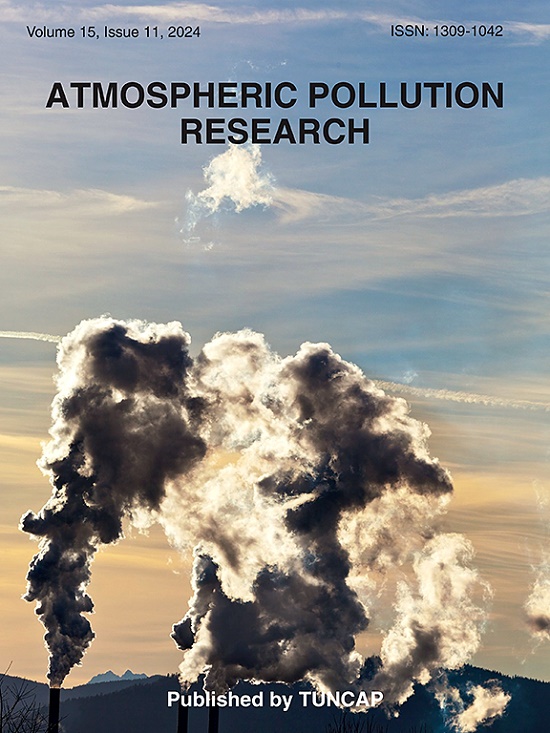Adaptive graph-generating jump network for air quality prediction based on improved graph convolutional network
IF 3.9
3区 环境科学与生态学
Q2 ENVIRONMENTAL SCIENCES
引用次数: 0
Abstract
Long-term exposure to PM2.5 is harmful to human health, and it is important and necessary for accurate PM2.5 forecasts. However, complex spatial correlations make air quality prediction challenging, and some studies are limited still by the priori knowledge and may lead to incomplete information transmission between different sites. To address this issue, this study proposes a Dynamic Adaptive Graph Generating Jump Network (DAGJN) to predict PM2.5. Specifically, in terms of spatial modelling, this study is the first to treat the graph structure as a learnable part, which can continuously optimize the weights with the training to better captures the potential spatial correlations among sites. A jump graph convolutional network that uses channel attention to weight features for selection of graph signals at different depths to utilize spatial information and mitigate the over-smoothing problem. A multiple self-attention mechanism is used to capture the global temporal correlation in time series data. Lastly, a spatial-temporal fusion layer can dynamically fuse spatial-temporal information based on global and local features. Meanwhile, extensive experiments were conducted on air quality datasets from Beijing and Chongqing with R2 of 0.514 (0.770), and RMSE of 62.284 μg/m3 (12.814 μg/m3) in 1–24 h prediction. The differences of PM2.5 prediction is compared with seasonal scales and shows that the DAGJN model outperforms other models. This study contributes significantly to the field of PM2.5 prediction, and these results illustrate the potential of the DAGJN model for PM2.5 prediction.
求助全文
约1分钟内获得全文
求助全文
来源期刊

Atmospheric Pollution Research
ENVIRONMENTAL SCIENCES-
CiteScore
8.30
自引率
6.70%
发文量
256
审稿时长
36 days
期刊介绍:
Atmospheric Pollution Research (APR) is an international journal designed for the publication of articles on air pollution. Papers should present novel experimental results, theory and modeling of air pollution on local, regional, or global scales. Areas covered are research on inorganic, organic, and persistent organic air pollutants, air quality monitoring, air quality management, atmospheric dispersion and transport, air-surface (soil, water, and vegetation) exchange of pollutants, dry and wet deposition, indoor air quality, exposure assessment, health effects, satellite measurements, natural emissions, atmospheric chemistry, greenhouse gases, and effects on climate change.
 求助内容:
求助内容: 应助结果提醒方式:
应助结果提醒方式:


